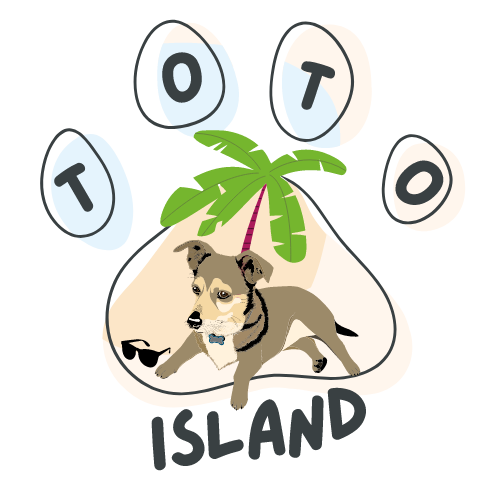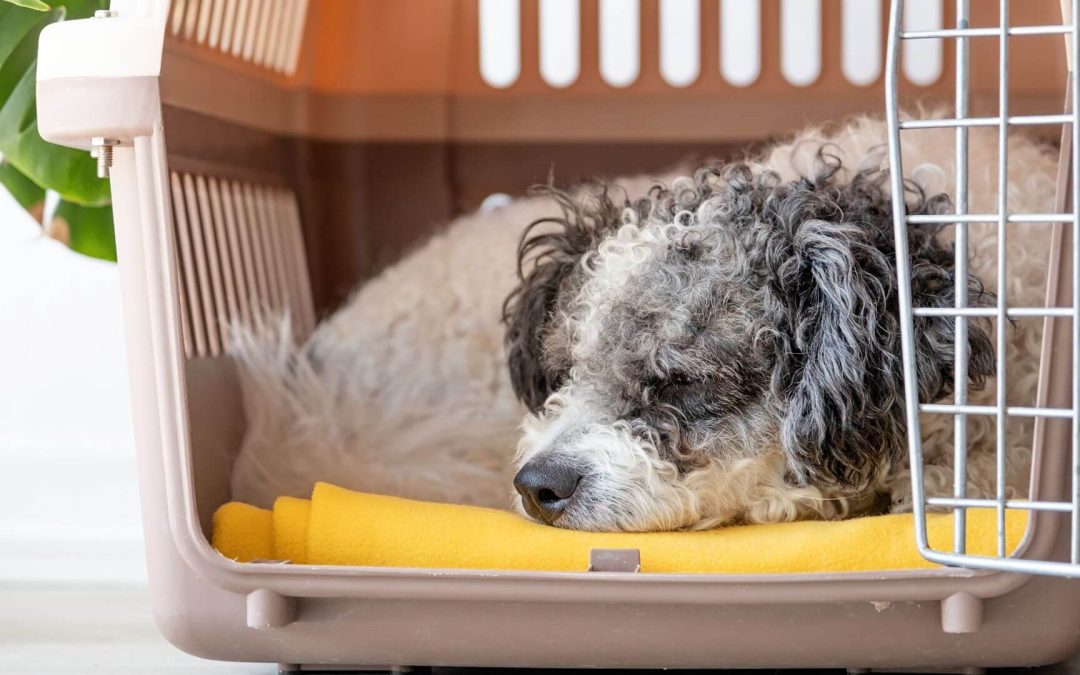Traveling with a large dog on a plane requires special preparations to ensure your pet’s safety and comfort. This article provides a detailed overview of why proper preparation is essential, how to get your dog ready for travel (including using massages), how to choose the right travel crate, and how to manage your dog’s stress during the flight. We will also discuss cargo options for dog transport and offer useful advice for post-arrival care.
This article will guide you through the rules and regulations for flying with large dogs to ensure that the journey is stress-free and safe for both you and your pet. Additionally, we will address frequently asked questions to make the preparation and travel process easier.
Why is proper preparation important when traveling with a large dog?
Transporting large dogs by airplane requires specific preparations to ensure their safety and comfort during the journey. Lack of preparation can cause significant stress and discomfort for your dog, which could potentially lead to health issues in the long run. It is crucial that your dog gets accustomed to the travel crate, becomes familiar with the noises of flying, and feels comfortable during the long journey.
Preparation should also include understanding airline rules and regulations. Each airline has its own set of rules for transporting large dogs, including crate dimensions, health documentation, and transport fees. Proper research and preparation will help avoid unpleasant surprises on departure day and ensure that all necessary documents and equipment are in place.
Preparing your dog for travel
Preparing your dog for travel is an essential part of a successful flight. Here’s how to get your dog ready to make the journey as stress-free as possible.
Health check and vaccinations
Before flying, it is strongly recommended to have a veterinary check-up to ensure that your dog is healthy and fit for travel. The vet will check your dog’s overall health, update vaccinations, and provide the necessary health certificates. Some countries and airlines require specific vaccinations or health certificates, so it’s important to check the requirements in advance.
Acclimating your dog to the travel carrier
A travel crate can be an unfamiliar and confined space for your dog, so it’s important to acclimate them to it beforehand. Start by placing the crate in your home, where your dog is familiar, and let them explore and get used to it. Gradually increase the time your dog spends in the crate and ensure they associate it with positive experiences. Treats and toys can also help in this process.
Before the flight, ensure your dog gets enough exercise. Take them for a walk or consider a dog fitness session or a relaxing swedish dog massage.
Choosing the right dog carrier for flying
Selecting the appropriate travel crate is crucial for your large dog’s comfort and safety. The crate should be spacious enough for your dog to stand, sit, and lie down comfortably. Additionally, it must comply with the airline’s specified standards.
The first step in choosing a crate is determining the right size. The crate should be large enough for your dog to be comfortable but not too large to avoid movement-related injuries during the flight. Airlines usually provide specific size requirements for crates, so it’s essential to adhere to these guidelines.
Comfort is also a key consideration. The crate should have adequate ventilation to ensure a steady flow of fresh air. It should also have a soft, comfortable bedding that is well-padded and easy to clean. The crate door should be secure but easily operable by the airline staff if needed.
Flying with your dog in the cabin
When flying with a dog, several rules and regulations must be followed. These include selecting a crate that fits your dog’s size and weight, and ensuring all required documentation and vaccinations are in order.
Most airlines have specific rules and regulations for transporting large dogs, which include requirements for crate size and material, as well as health certificates. It’s important to thoroughly research these rules before traveling and ensure all necessary documents and equipment are ready.
Managing your dog’s stress during the flight
Flying can be stressful for dogs, so it’s important to prepare and take steps to calm them. Familiar toys and blankets in the crate can help your dog feel secure. Additionally, calming products can be used before and during the trip to help reduce stress levels. Consult your vet for advice on using these products.
Another effective way to calm your dog is through dog massage. Massage helps relax your dog’s muscles and reduces stress. Regularly massaging your dog in the days leading up to the trip and using it on the day of travel can help them feel more relaxed before the long flight.
Cargo options for dog transport
Flying a dog in cargo? Transporting large dogs often involves placing them in the cargo hold of the airplane. This option has both benefits and drawbacks that should be considered.
Advantages and disadvantages of cargo transport
One of the biggest advantages of cargo transport is that large dogs have more space in the lower part of the airplane, which provides additional comfort. The cargo area is temperature-controlled, ensuring your dog’s comfort during the journey. However, a disadvantage is that your dog will not be close to you, which could increase their stress. It is important to prepare for this possibility and take all necessary steps to ensure your dog’s safety.
Ensuring your dog’s safety in the cargo hold
To ensure your dog’s safety, make sure the travel crate is securely fastened in the cargo hold and that your dog cannot escape. The crate door should close securely but be easily openable by the staff if needed. Additionally, clearly label the crate with your dog’s name and your contact information so that staff can reach you if necessary.
Arrival and post-arrival care
After the journey, it is important to properly care for your dog to help them adjust to the new environment and alleviate post-flight stress.
What to do after landing
Upon arrival at your destination, the first thing to do is check on your dog. Ensure they are in good condition and have no injuries. Provide them with fresh water and a chance to move around to relieve any discomfort from the long journey. If your dog is stressed or restless, give them time to rest and explore their new surroundings.
Rehabilitation after travel
In the days following the trip, monitor your dog’s behavior and health. If you notice any unusual symptoms or behaviors, consult a vet. Regular walks and playtime can help your dog physically and mentally recover. Continue with the usual daily routine to help your dog return to their normal routine as quickly as possible.
-> Check out the dog thai massage treatments!
In summary
Flying with large dogs requires careful preparation and thorough planning. Proper preparation is key to ensuring a smooth and comfortable journey for both you and your dog. It’s important to be aware of airline regulations and requirements, as well as to ensure your dog’s health and comfort during travel.
Acclimating your dog to the travel crate, choosing the right crate, and managing your dog’s stress are all essential for a successful trip. Using dog massage and calming products can help reduce stress and ensure your dog remains calm and relaxed during the long flight. After arrival, providing proper care will help your dog adjust to the new environment.
The tips and advice provided in this article will help make flying with a large dog less stressful and ensure a safe and enjoyable journey for both parties. The frequently asked questions section offers additional useful information to simplify the preparation and travel process.
Good flights!
Frequently asked questions (FAQ)
- What documents are needed for my dog to fly? Typically, you will need a vaccination record, a health certificate, and sometimes special permits. Requirements can vary by airline and destination country.
- How do I get my dog used to the travel crate? Gradually acclimate your dog to the crate by placing it at home and allowing your dog to explore it. Make the crate appealing with treats and toys.
- What type of crate should I choose for my large dog? The crate should be large enough for your dog to stand, sit, and lie down comfortably. It should also meet the airline’s requirements and close securely.
- What if my dog is stressed during the flight? Use calming products recommended by your vet, and consider dog massage to help calm your dog. Ensure the crate is comfortable with familiar toys and blankets.
- How should I care for my dog after arrival? Check your dog’s condition immediately after landing, provide fresh water, and give them a chance to move around. Monitor their behavior and health in the days following the trip and consult a vet if necessary.
If you choose me as your dog masseuse or your dog’s fitness trainer, I will assess your dog’s condition every time, and if I find that your pet needs more rest, I will let you know.
For dog massage treatments and dog fitness training, feel free to contact me in the Saint Augustine area! Call us and we’ll arrange the first appointment! (904) 377 6291
For more puppy and adult dog tricks and useful information, read more on the blog:

